The FTF Chronicle
Page 2
By Niels Jansen (North Holland 2022)
Cab-over-engine trucks based on the American model
A new heavy-duty tractor launched in 1970 was the F-8.29D, which could move a payload of 200 tons. Power came from a 477-hp V12 Detroit Diesel engine coupled with an Allison CLBT5960 6-speed semi-automatic transmission. The vehicle was equipped with a hydraulic torque converter, retarder and a 28-ton rear axle with hub final drive. Always customized to customer specifications, this tractor proved to be very successful in the heavy-duty sector from the outset, as it was equipped with first-class components. The V12 versions in particular enjoyed great popularity, which led to the Dutch armed forces ordering a series of 39 heavy-duty 6x4 tractors in 1972. They were to replace Thornycroft's Mighty Antar tractors, which had been in service with tank trailers since the 1950s. Both DAF and Floor had been commissioned to develop a prototype tractor with trailer for a load capacity of about 55 tons. With a 4-speed auxiliary transmission in the driveline, the tractor was also to be suitable for total weights of up to 200 tons.
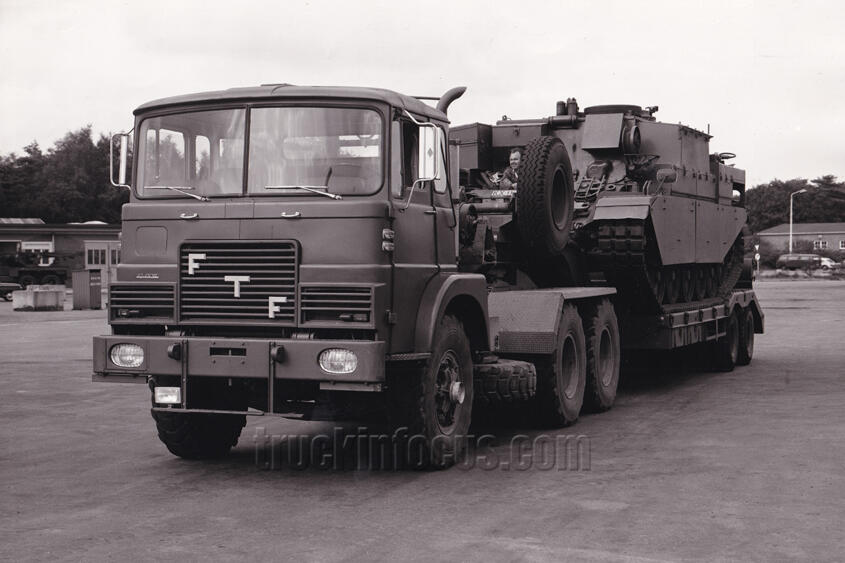
Some of these powerful machines ended up in Egypt and the Middle East. These tractors, which were designed to operate in high temperatures and dusty conditions, pulled multi-axle modular Nicolas, Goldhofer or Scheuerle trailers and sometimes carried loads of up to 1,000 tons. The great reliability that these vehicles demonstrated under the most extreme conditions also helped FTF sell more "regular" trucks. And many customers ordered a new truck or tractor complete with a Floor-built trailer or semitrailer.
Heavier chassis
In 1978, a slight change in the FTF front design took place and the product range expanded to include 8x4 and 10x4 drive formulas. In the same year, two special 6x6 tractors with heavy ballast flatbeds were built for the Dutch heavy haulage company Mammoet to transport huge sections of a Colombian cement factory across the Andes. The 38-ton capacity three-axle tractors were equipped with 425-hp Detroit 8V-92T diesel engines under a higher-positioned steel cab and had Allison HT750 semi-automatic transmissions. Rear axles were from Kirkstall and the front driveshaft was from Faun. Special Donaldson cyclone filters ensured that sufficient oxygen was supplied to the engines in the thin high-altitude air. It is said that these powerful traction engines are still in operation there today.
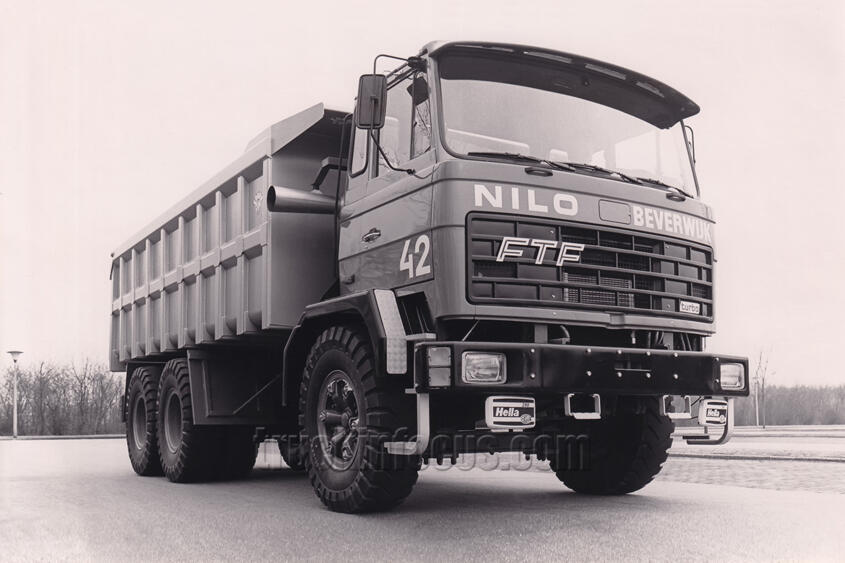
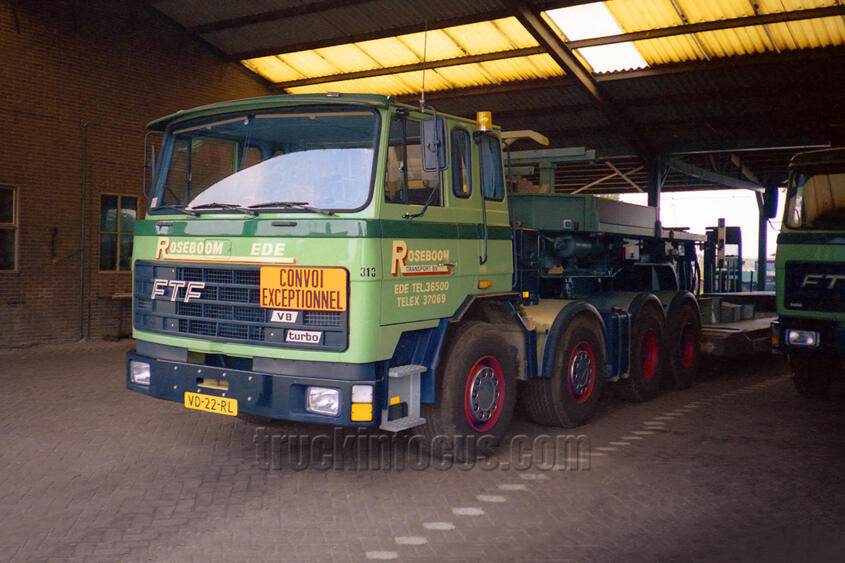
Floor's next production step was the introduction of a completely new cab-over truck for both the FD and FS series. The first result of a new order for Motor Panels was presented at the IAA in Frankfurt in September 1979.
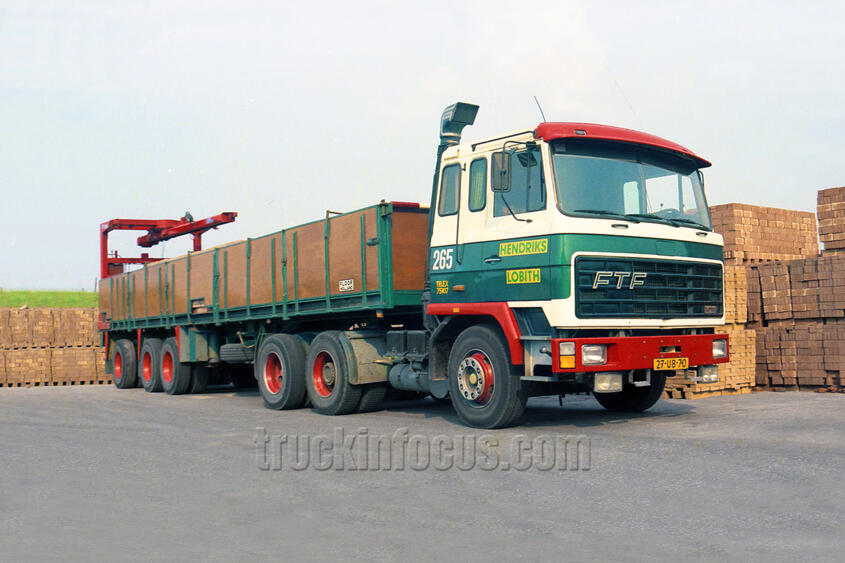
The modern steel cabs, designed in the style of the time, came partially assembled from England. In its own factory, Floor assembled the grille, fenders and lower door segments in fiberglass, as well as steel parts such as bumpers and entry steps. The interior was also completely new and much more comfortable than the old model. New chassis configurations from 1980 included an 8x4 heavy-duty tractor with standard or flat roof, a 6x4 tipper with 50 tons gross vehicle weight and a special ballast tractor for pulling container trains, for example at the Europe Container Terminal (ECT) in Rotterdam.
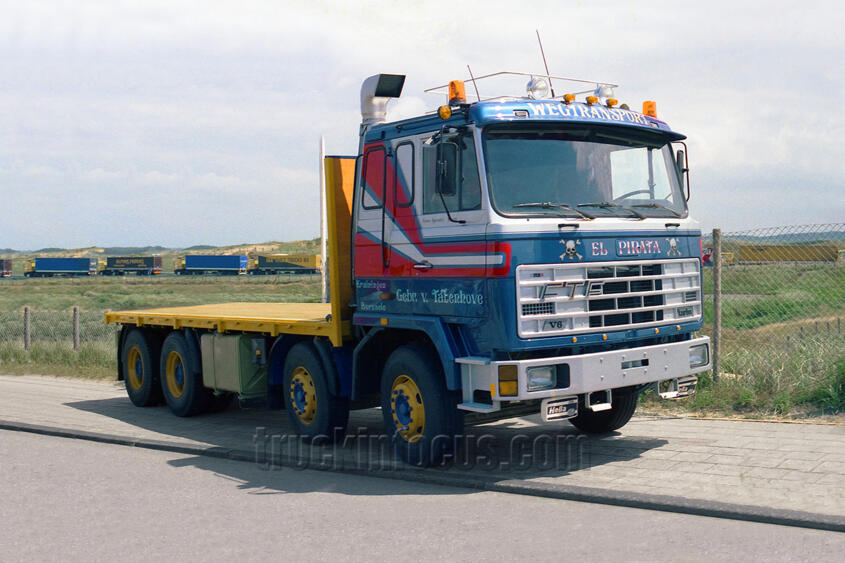
The new series again incorporated durable high-performance engines, transmissions and other components from General Motors, such as the Detroit Diesel 6V-92T with 320 hp and the 8V-92TA with 430 hp. Transmissions were Fuller RTO transmissions, with 9 or 13 speeds, or the upgraded Allison HT750DRD or CLBT-5960 semi-automatic transmissions. Driven and non-driven axles came from Faun, Kessler, Kirkstall, Rockwell, Steyr and BPW, depending on the customer's preference.
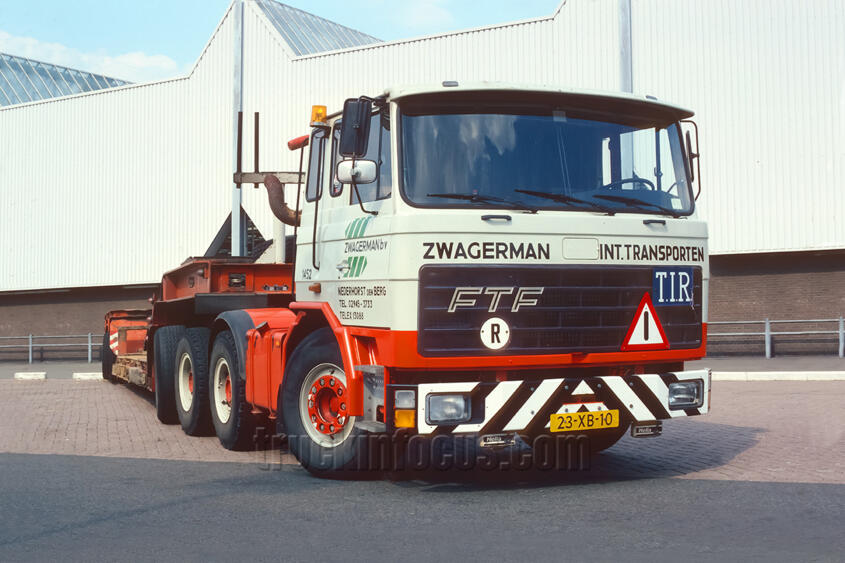
Farewell to the ranks of truck manufacturers
In 1990, FTF engineers were experimenting with the installation of Detroit Diesel's new inline six-cylinder engine from the 60 series. A new series of trucks also appeared with a modified radiator grille. This measure made the appearance of the cab much more modern. However, fierce competition with major truck manufacturers caused Floor's market share to drop dramatically in the following years. Custom-built trucks became too expensive, and in 1994 FTF delivered its last eight chassis.
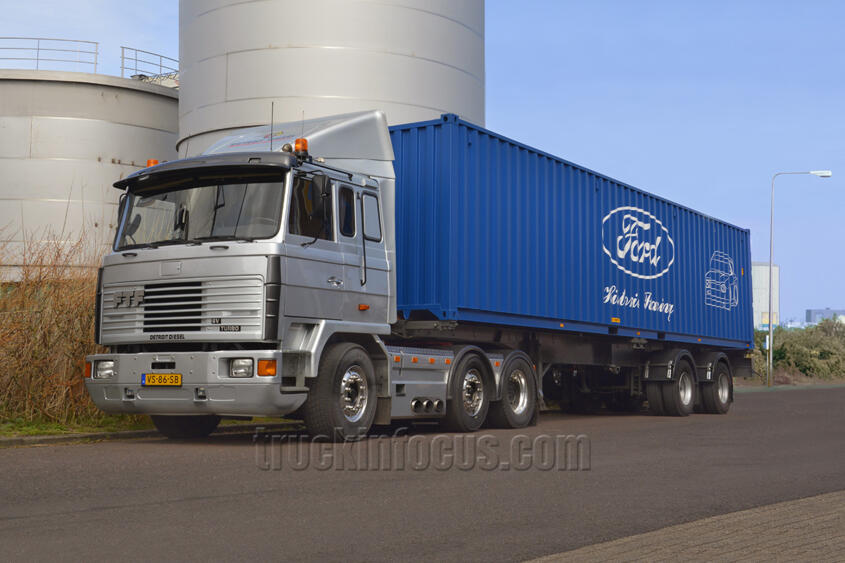
A year later, the decision was made to stop assembling motor vehicles, and the company henceforth concentrated entirely on the production of trailers and semi-trailers. In the almost 30 years of its existence, the heavy-duty vehicle specialist produced a total of 668 trucks bearing the FTF logo. With FTF's departure from the ranks of European truck manufacturers, the famous sound of roaring U.S. diesel engines also gradually disappeared from the road.
In 2006, trailer and body manufacturer Nooteboom, which was also based in Wijchen, acquired Floor. Four years later, in 2010, Nooteboom sold not only the Floor Trailers brand, but also Kennis Trailers to the Dutch trailer and body manufacturer Pacton in the town of Ommen (province of Overijssel). The Floor logo still exists today under the umbrella of the Pacton Group.
Web links:
https://de.wikipedia.org/wiki/Floor_Truck_Fabriek
Have errors crept into this article? If you have any suggestions for improvement, just let us know and we'll take care of it. Thank you for your commitment. Please use this e-mail address for your corrections: corrections@truckinfocus.com